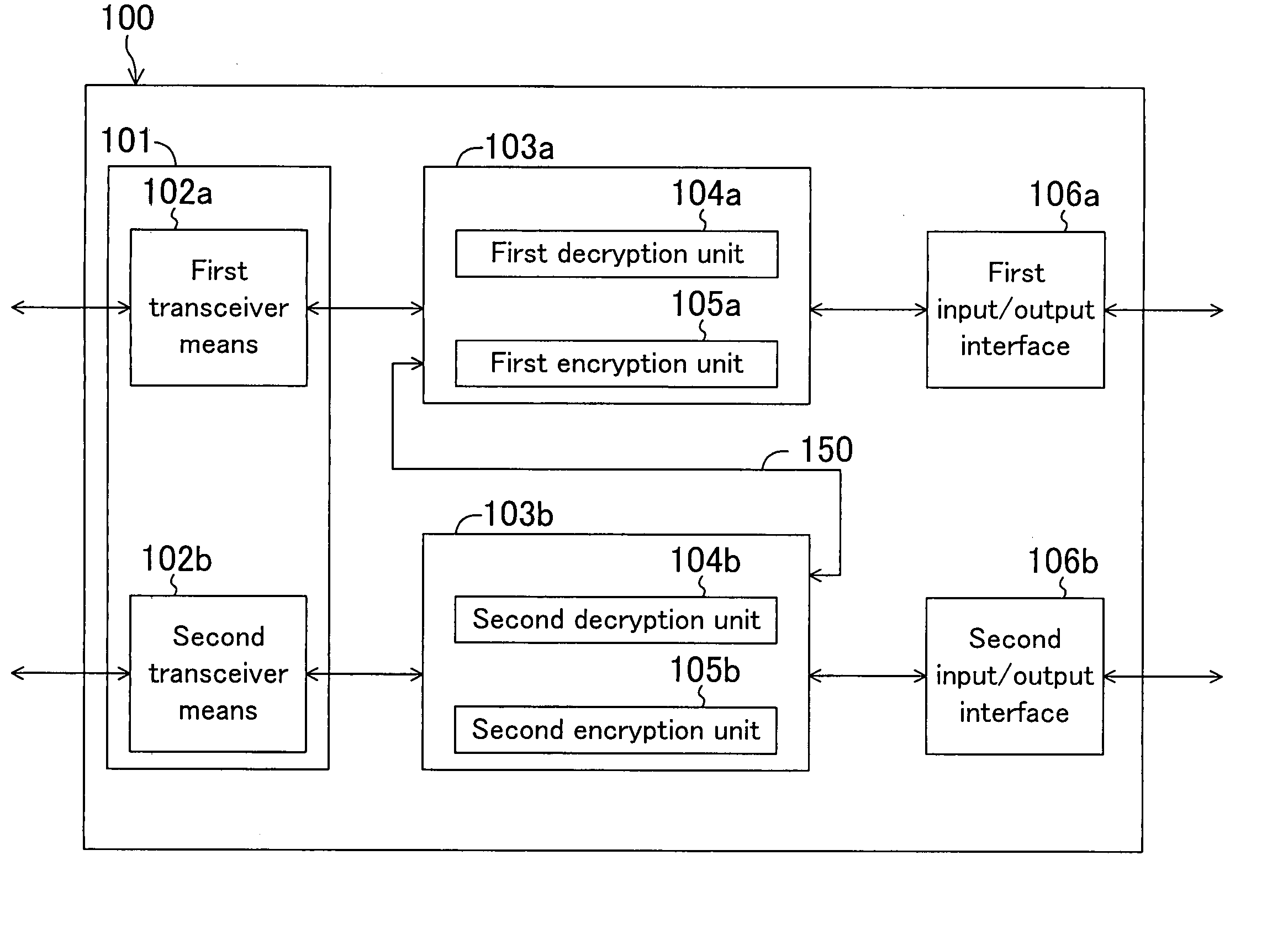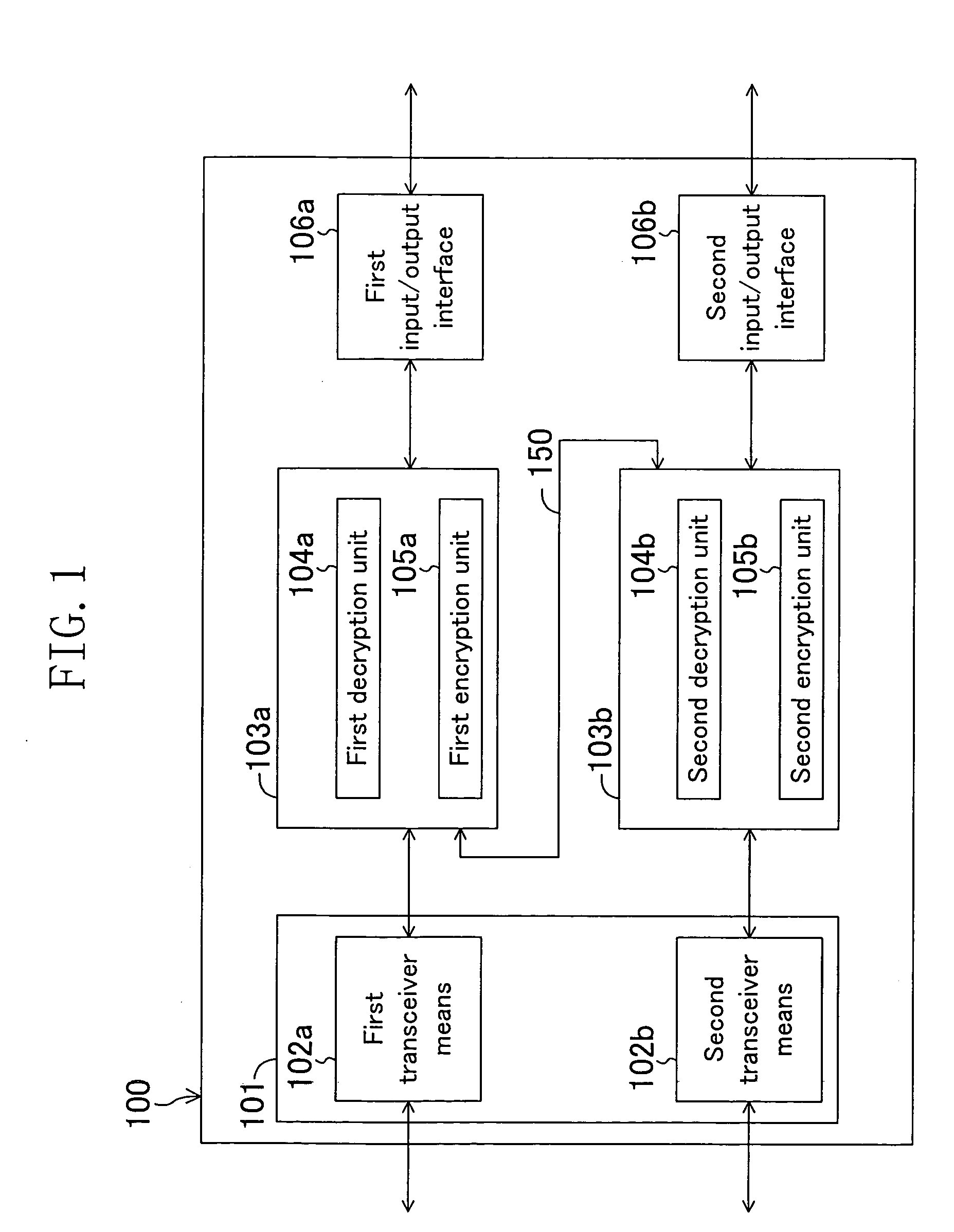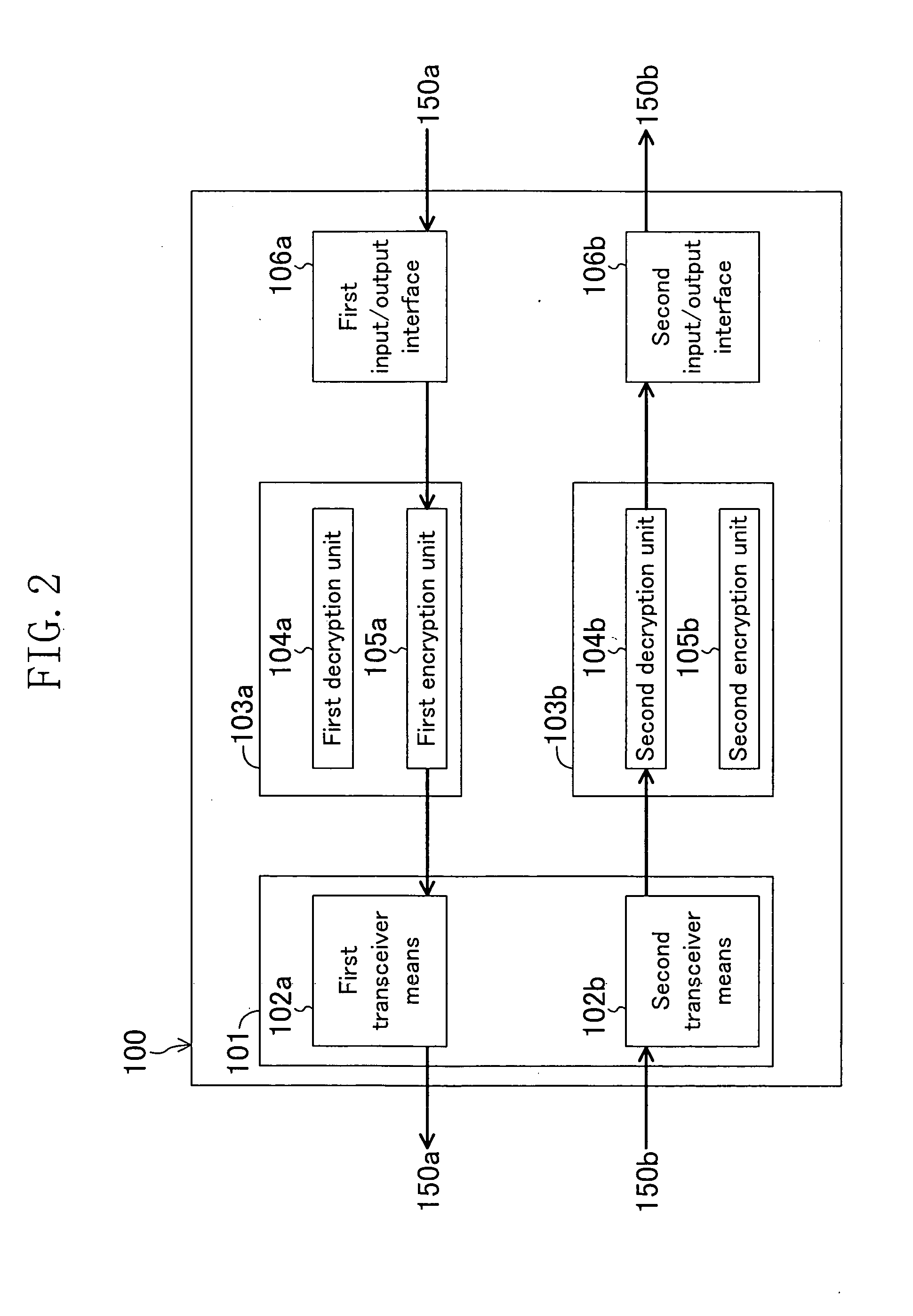Data transceiver and data transceiver system
a transceiver and data technology, applied in the field of data transceivers and data transceivers, can solve the problems of inpractical protection against illegal copying by adding encryption circuits, the drawback of digital av data, and the inability to easily copy contents, etc., and achieve the effect of increasing the circuit scal
- Summary
- Abstract
- Description
- Claims
- Application Information
AI Technical Summary
Benefits of technology
Problems solved by technology
Method used
Image
Examples
embodiment 1
[0116] Embodiment 1
[0117] Hereinafter, a data transceiver according to a first embodiment of the present invention will be described with reference to the drawings.
[0118]FIG. 1 is a block diagram showing a configuration of the data transceiver of the first embodiment.
[0119] As shown in FIG. 1, the data transceiver 100 includes: a transceiver means 101 for transmitting and receiving data; first and second encrypting / decrypting means 103a and 103b for encrypting and decrypting data; and first and second input / output interfaces 106a and 106b for input and output of data.
[0120] The transceiver means 101 further includes a first transceiver means 102a and a second transceiver means 102b. The first encrypting / decrypting means 103a includes a first decryption unit 104a for decrypting data and a first encryption unit 105a for encrypting data. The second encrypting / decrypting means 103b includes a second decryption unit 104b for decrypting data and a second encryption unit 105b for encryp...
embodiment 2
[0145] Embodiment 2
[0146] Hereinafter, a data transceiver according to a second embodiment of the present invention will be described with reference to the drawings.
[0147] The data transceiver of the second embodiment is characterized by further including two selectors in addition to the configuration of the data transceiver 100 of the first embodiment shown in FIG. 1. FIG. 7 shows a configuration of the data transceiver of the second embodiment.
[0148]FIG. 7 is a block diagram showing the configuration of the data transceiver of the second embodiment. In FIG. 7, the same members as those of the data transceiver 100 of the first embodiment shown in FIG. 1 are identified by the same reference numerals.
[0149] As shown in FIG. 7, the data transceiver 200 includes: a first selector 120a on a data transmission path between a first transceiver means 102a and a first encrypting / decrypting means 103a; and a second selector 120b on a data transmission path between a second encrypting / decry...
modified example 1
[0163] (Modified Example 1 of Embodiment 2)
[0164] Hereinafter, a data transceiver according to a first modified example of the second embodiment will be described with reference to the drawings.
[0165]FIG. 9 is a block diagram showing a configuration of the data transceiver of the first modified example of the second embodiment. In FIG. 9, the same members as those of the data transceiver 200 of the second embodiment shown in FIG. 7 are identified by the same reference numerals.
[0166] As shown in FIG. 9, the first modified example of the second embodiment is characterized by further including a selector controlling section 121 in addition to the configuration of the data transceiver 200 shown in FIG. 7.
[0167] The selector controlling section 121 controls the first and second selectors 120a and 120b, thereby determining data transmission paths to be selected by the first and second selectors 120a and 120b.
[0168] Hereinafter, operation of the selectors controlled by the selector co...
PUM
 Login to View More
Login to View More Abstract
Description
Claims
Application Information
 Login to View More
Login to View More - R&D
- Intellectual Property
- Life Sciences
- Materials
- Tech Scout
- Unparalleled Data Quality
- Higher Quality Content
- 60% Fewer Hallucinations
Browse by: Latest US Patents, China's latest patents, Technical Efficacy Thesaurus, Application Domain, Technology Topic, Popular Technical Reports.
© 2025 PatSnap. All rights reserved.Legal|Privacy policy|Modern Slavery Act Transparency Statement|Sitemap|About US| Contact US: help@patsnap.com



